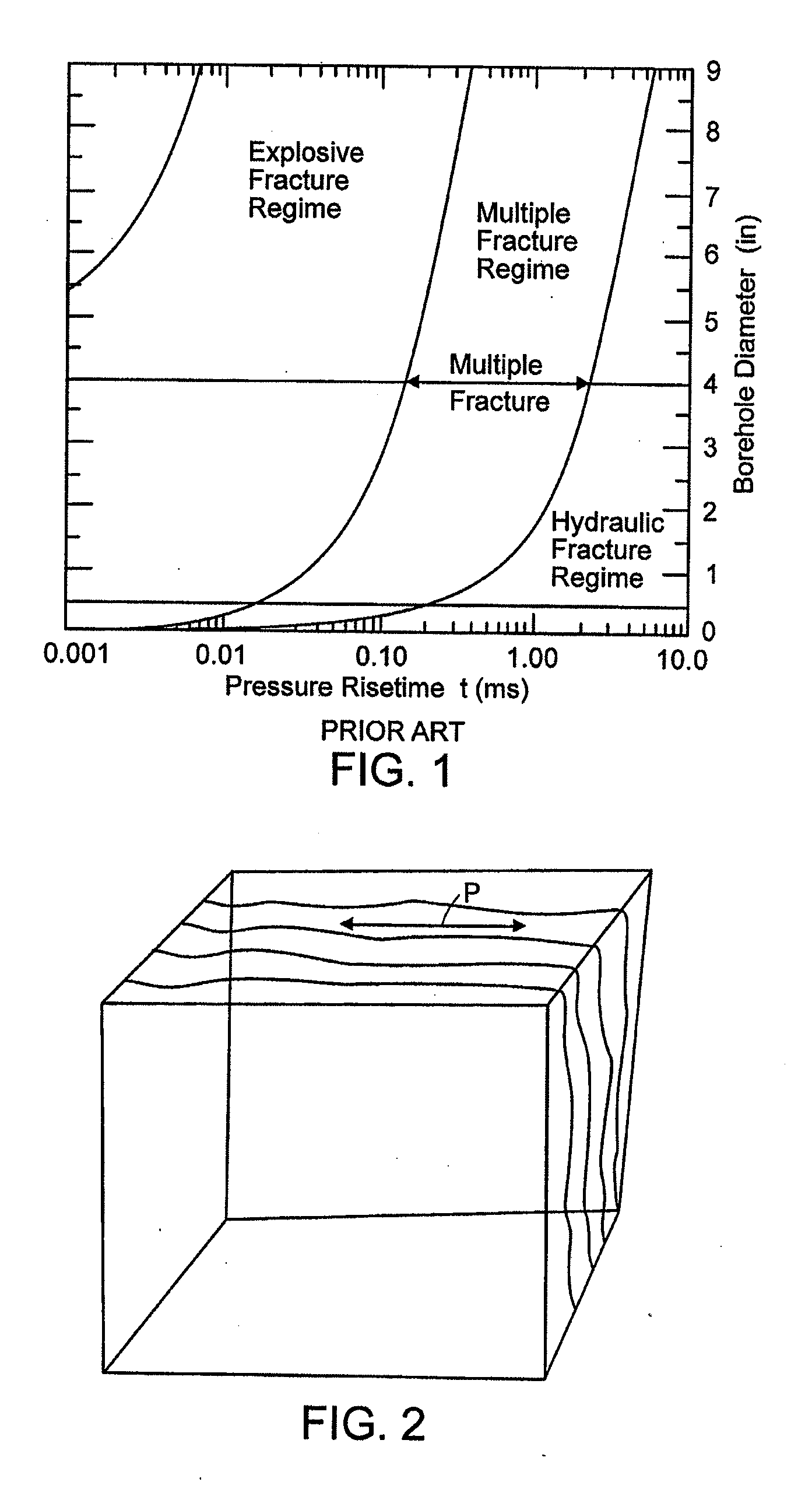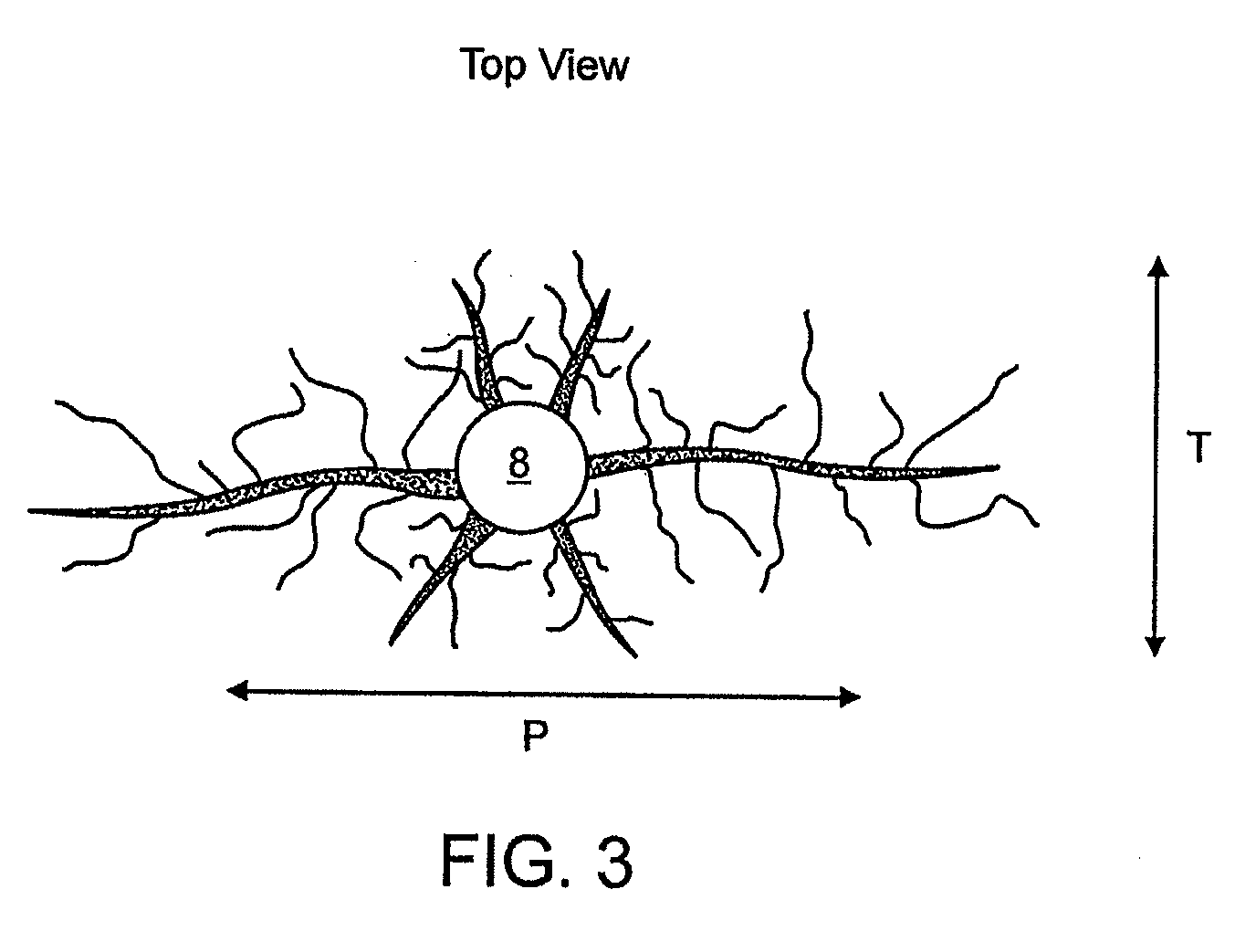Method and Apparatus for Stimulating Wells with Propellants
a technology of propellant and well, applied in the direction of fluid removal, borehole/well accessories, weapons, etc., can solve the problems of extending the fracture regime, destroying and rubbing formation, and limiting the success of early methods, so as to achieve and extend the fractures. the effect of multiple fracture regimes
- Summary
- Abstract
- Description
- Claims
- Application Information
AI Technical Summary
Benefits of technology
Problems solved by technology
Method used
Image
Examples
Embodiment Construction
[0048]The invention relates to apparatus and methods to stimulate subterranean wells, including injection or production wells, utilizing rocket propellants. Wells such as oil and gas production wells can be stimulated to enhance oil or gas production. Although the following discussion focuses on oil production wells, the technology is also applicable to gas production wells, injection wells, storage wells, brine or water production wells, disposal wells, and the like. Known stimulation techniques can include multiple fracturing and / or cleaning near the wellbore to reduce flow interference that can be caused by debris. As described above, hydraulic fracturing processes create fluid (e.g., gas and / or liquid) communication by fracturing the rock with hydraulic pressure. A propping material can also be used, such as sand, bauxite, or other materials which are designed to keep the fracture open to an extensive area of the pay zone. But hydraulic fracturing is not efficient or practicable...
PUM
 Login to View More
Login to View More Abstract
Description
Claims
Application Information
 Login to View More
Login to View More - R&D
- Intellectual Property
- Life Sciences
- Materials
- Tech Scout
- Unparalleled Data Quality
- Higher Quality Content
- 60% Fewer Hallucinations
Browse by: Latest US Patents, China's latest patents, Technical Efficacy Thesaurus, Application Domain, Technology Topic, Popular Technical Reports.
© 2025 PatSnap. All rights reserved.Legal|Privacy policy|Modern Slavery Act Transparency Statement|Sitemap|About US| Contact US: help@patsnap.com



